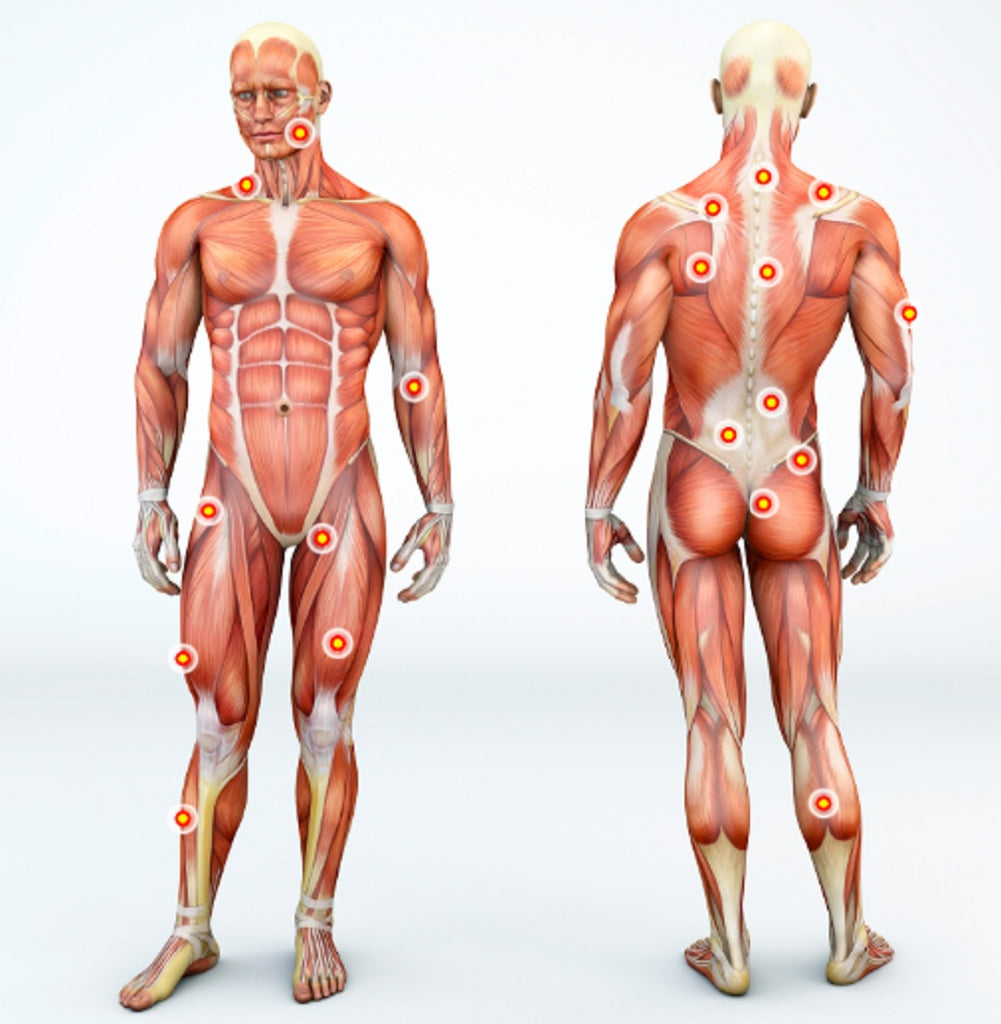The fascial system is a network of connective tissues that hold together our muscles, bones, nerve fibers, blood vessels, and organs in place. It doesn’t just provide structure, it also has nerves that make it nearly as sensitive as the skin and it stiffens when stressed.
Just like tendons and ligaments, fascia is made up of collagen. But that’s where their similarity ends. While tendons connect muscle to bone and ligaments connect one bone to another, fasciae (plural form of fascia) surround, wrap, separate, and penetrate each and every muscle and other structures in our body. This connective tissue is like a three-dimensional web that runs from the top of our head to the tip of our toe. It encapsulates us and makes our body flexible, mobile, and strong.

Benefits of a Healthy Fascia
Lessened risk of muscle injury - When the fascia is healthy, it’s strong, flexible, and supple. It prevents muscles from over-stretching and makes the body stronger thus reducing the risk of injuries.
Reduced pain - Many experience chronic pain due to unhealthy fascia. Having a healthy fascia can reverse this pain and improve the quality of life.
Improved mobility - A healthy fascia ensures that our body will become more flexible, mobile, and stronger.
Anti-aging - As we age, we start feeling aches and pains that cause immobility. A healthy fascia is like an anti-aging tool that keeps us moving pain-free.
Improved body symmetry and alignment - A healthy fascia is soft, slick, and pliant. It holds the body together and keeps it aligned
Increased blood flow - With the fascia healthy and the body healthy, blood will flow freely.
Better performance - Being more flexible and mobile leads to better performance in sports, dancing, and even work.

Causes of unhealthy fascia
There are many factors that can affect the health of our fascia, causing it to tighten, dry up, become sticky, and create adhesions within the fascia that makes muscles stick together and inhibit their capacity to execute their specific duties. These are the factors that can lead to reduced mobility and flexibility:
- Poor posture
- Dehydration
- Muscle injury or overuse
- Poor eating habits
- Inadequate sleep
- Stress
- Inactivity
How to Boost Your Fascia’s Health
Daily stretching
Stretching every day helps the gummy fascia to extend, fuse, and fall back to its most favored three-dimensional flexible form. Stretching lessens the risk of structural problems and inflammation in the body.
Good posture
Having a good posture helps your spine to keep a neutral pose and keep fascial tautness from building up.
Foam rolling
A great way to check and find out the spots where your fascia is having problems is through foam rolling. Work on the trigger points you find to slowly release the tension and feel how it gradually disappears.
Keep moving
Exercising, walking, running, biking, swimming, or simply doing house chores can help keep your fascia healthy. So move!

Yoga
Practicing yoga has a lot of benefits and this includes having a healthy fascia. In yoga, the arms, legs, and joints are stretched and aligned in different directions thereby helping the fascia web to unwind.
Hydration
The fascia needs lots of water to keep it hydrated. So drink up!
Heat treatment
The fascia enjoys external and internal heat. You can use a heating pad, take a hot shower, or go to the sauna bath. Heat can increase circulation and makes the fascia more pliant and responsive.
Cold treatment
You can apply a cold compress on a sore area to reduce the inflammation. You can do this for about ten minutes several times a day until the swelling subsides.
Consult an expert
If you’re experiencing chronic pain or soreness that won’t go away then it’s best to consult an expert to find out what’s causing it and get the right treatment.
You might also be interested to read 18 Simple Ways to Manage Stress and Mindfulness and Its Benefits To Your Health


